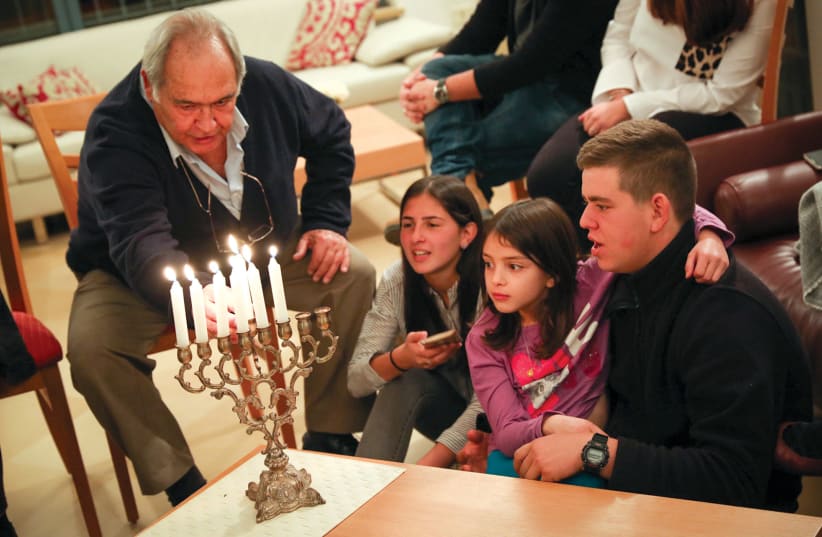Traditionally, the holiday seasons are joyous times for those who can reconnect with family or for those who have fond memories of family celebrations. For those disconnected from family – having undergone the loss of a parent, a sibling, a child or other close person – the holidays pose a somber challenge.
Whether one faces the festival in solitude, bereft, or when one faces those occasions with others who share that loss, the experience can be one of emotional muting, of palpable emptiness upon seeing the empty seat at the table, of an acute resurgence of grief triggered by the presence of absence, of isolation, and of feeling incapable of attaining those former feelings when home was still a warm, safe place. For some, joy seems incompatible with mourning.
Studies have shown a paradoxical increase in emotional distress during the holidays, when these days fail to bring on the once-familiar happiness of feeling whole and united with loved ones. For many facing the reality of a long pandemic with much illness, changed lives and many losses, the upcoming holidays pose the ominous sense that there can be no rejoicing while there is still pain.
Parents have a uniquely challenging opportunity: modeling for their youngsters the reality that although we all feel loss and acknowledge lingering sadness, we can create meaning in the observances, rituals and the spirit of these days. In our tradition, we recognize that the heart and mind are capable of experiencing multiple feelings and numerous thoughts, simultaneously.
Picture, for example, the day that is the epitome of happiness – a wedding. At the crescendo of its most radiant moment, a glass is shattered, a symbol of tragic loss in our national psyche. It is a reminder of enduring mourning for our homeland and its sanctity; yet a moment later, the resounding cheer of “mazal tov” is heard, and the music and dancing commence. This is our symbol that there is space within the mind and heart for emotions which appear inconsistent yet we accommodate sadness and joy.
DURING A religious festival when a family is still hurting, parents model this psychological duality for their children, demonstrating that our sadness is real and must be accepted and respected. Yet engaging in these yearly, familiar practices is also real, and can be accepted and respected as well. There is room within most of us to tolerate dual and even dueling feelings.
When Joseph was in Egypt, he was described as navon (discerning) and chacham (wise). Two fascinating views, those of Rambam and his son Rabbeinu Avraham, illuminate those titles. Rabbeinu Avraham views those navon and chacham qualities as the ability to look ahead and anticipate emerging patterns.
Joseph studied the present and planned for the future. The Rambam views those qualities as the ability to look back and make sense of the past by examining what is happening in the present. Joseph identified past changes that had surfaced in Egypt, and then saw clearly what was happening in the present. The navon quality is how our tradition describes our wise sages – b’nei bina – who saw in the miracles of their time, amid the warfare and pillage, a sign of future hope and security.
The Talmud tells us that they looked back at what had happened, but they also looked forward. Both aspects of navon and chacham were employed in determining that amid the exile, despite the suffering, beyond the centuries to come of being oppressed and scattered – we accept what is, while also making room for what will be in times ahead.
Hanukkah for Jews who mourn and suffer is our symbol of security lurking beneath the pangs of mourning. It is a time when we cannot deny destruction, yet we foresee the redemption just beyond our horizon. It is a season of light that brings radiance to darkness.
Hanukkah tradition models for us the human capacity to find solace while in pain, and to create hope while mindful of the loneliness that lingers. This is a paradigm for all who approach this holiday season with aching, restless spirits: acknowledge what and whom we are missing and yet give yourself permission – and gently encourage your children – to kindle lights of hopefulness, drawing together, trusting that better times are coming when tearful eyes look beyond the moment as mind and heart listen for echoes of cheer and rejoicing.
The writer is director of the Crisis Intervention, Trauma and Bereavement Support Services of Chai Lifeline.

